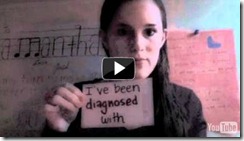Lately I've been thinking a lot about suicide. A few months ago I learned that the wonderful teenage daughter of my best friend had contemplated harming herself but reached out for help; and vibrant young person in my family, who is slightly older, tried to follow through, partly in reaction to some meds, but thankfully was rescued.
Then this week I attended the funeral of the daughter of another friend, who succeeded in killing herself taking a beloved pet with her. She was just two years younger than my own daughter and only child.
During the service, an article crossed my mind that I had read only a few days earlier about the new science of emotions. It was co-written by Dr. Richard J. Davidson, a neuroscientist and professor of psychology and psychiatry at the University of Wisconsin–Madison. He is also the founder of the Center for Investigating Healthy Minds at the Waisman Center.
The article is a great introduction to a book published this week that he co-authored with Sharon Begley entitled The Emotional Life of Your Brain: How Its Unique Patterns Affect the Way You Think, Feel, and Live--and How You Can Change Them.
It is a fascinating look into not only how we differ in “how we react to what life throws at us” but also how our brains differ and how and why treatments such as cognitive behavioral therapy can repair and strengthen those responses.
Listed in the hard copy of the article, but apparently not in the online version, are what the authors identify as the (I’ve added the definitions from the book) 6 Key Elements of Emotional Style:
Resilience – how slowly or quickly you recover from adversity.
Outlook – how long you are able to sustain a positive emotion.
Self Awareness – how adept you are at picking up on social signals from the people around you.
Social Intuition – how well you perceive bodily feelings that reflect emotional responses to take into account the context you find yourself in.
Attention – how sharp and clear your focus is.
Sensitivity to Context – how good are you at regulating your emotions.
My friend’s teenage daughter is getting better and better and has chronicled her illness and recovery in a remarkable blog that includes the video shown above and linked here. She has also been written up in her school newspaper. My young family member has responded very well to cognitive therapy which has helped her regain her trademark resilience and she’ll never accept another prescription with “benzoid in the name.
The article and the book describe the new information revealed by Dr. Davidson’s research about what is happening in the brain when people react the way these folks did and more importantly that it can be reversed.
The new discovery is that emotions don’t run on a circuitry separate and independent of the regions previously thought to pertain exclusively to cognition, reason, and logic. In fact, emotional style arises partly in these areas.
Resilience, for instance, “is marked by greater left versus right activation in the prefrontal cortex: a lack of resilience comes from higher right prefrontal activation. The amount of activation in the left prefrontal region of a resilient person can be 30 times that in someone who is not resilient.”
Two friends, both former Mayors, have often noted that I am one of the most resilient people they have ever known, something put to the test often in my now-concluded four-decade-long career in community economic development.
However, I didn’t always bounce back so quickly. Even when board meetings went smoothly, it always took me as a CEO, several hours to rejuvenate. I can also recall at least two occasions where it took me several days or weeks to recover from a deep, personal loss and I’d be lying if I didn’t admit that I doubted at the time whether it was all worth it.
But Dr. Davidson has also found a second element at play in the fact that “the more axons you have connecting one neuron to another between the prefrontal cortex and the amygdala, the more resilient you are. The less of this “white matter”—that is, the fewer the highways leading from the prefrontal cortex to the amygdala—the less resilient you are.”
The great news is that a person’s emotional style can be changed. Meditative therapies such as cognitive behavioral therapy actually “increase activity in the prefrontal cortex (especially on the left side), to strengthen the neuronal highways between it and the amygdala, or both.’
Both the article and the book are well worth reading. There is always hope!
1 comment:
Reyn, thanks for raising a very important subject. In the Triangle, we have as many acknowledged suicides each year as we do AIDS deaths -- but one is a public health crisis and the other a private shame. I can commend the Survivors of Suicide support group in Chapel Hill to any who have lost loved ones. It helped me. God bless. Carlene Byron
Post a Comment